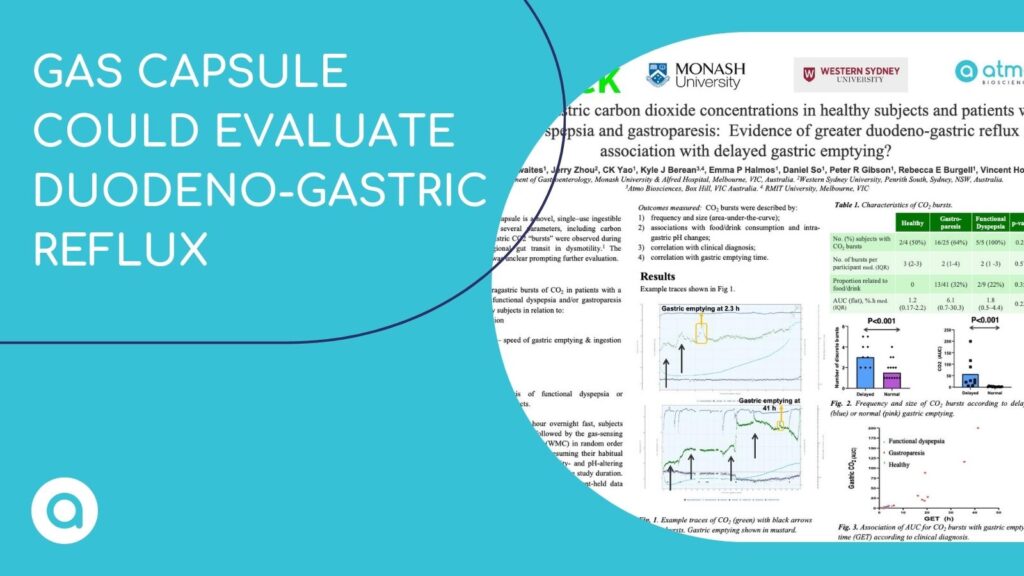
Study indicates Atmo Gas Capsule could be used to evaluate duodeno-gastric reflux in dysmotility patients.
October 19, 2023.
The Atmo Gas Capsule could be used to help understand and monitor duodeno-gastric reflux and provide insight into its connection to delayed gastric emptying, according to an investigation by researchers from Monash University and Western Sydney University.
The findings were displayed in a poster presentation at UEG Week, held October 14-17 in Copenhagen, Denmark.
During a pilot study to assess the effectiveness of using Atmo’s gas-sensing capsule to measure regional transit time, researchers observed intra-gastric “bursts” of carbon dioxide (CO2) in patients with gastroparesis and functional dyspepsia.
This phenomenon was only detected due to the Atmo Gas Capsule and its unique ability to detect gases as the source of production in the gastrointestinal system.
Using data recorded by the capsule, researchers were able to determine that the CO2 bursts were larger and more frequent in patients with delayed gastric emptying and not associated with prior clinical diagnosis. They then identified duodeno-gastric reflux as the most likely physiological explanation for these bursts.
Poster co-author Dr. Phoebe Thwaites said: “While further validation is required in a larger cohort of subjects, the ability of the Atmo Gas Capsule to quantify this phenomenon offers a unique opportunity to evaluate duodeno-gastric reflux in a variety of clinical conditions which could impact clinical decision making and therapeutic interventions.”
Dr. Kyle Berean, VP Technology and Head of Clinical Affairs at Atmo Biosciences, added: “This is a great example of how Atmo’s technology can shine a light into the black box of the human gut. Without Atmo’s gas-sensing capsule, researchers could not know that large amounts of carbon dioxide was generated in the stomach of patients with upper GI dysmotility. While it’s early days, it opens up some very intriguing possibilities for furthering the understanding and diagnosis of motility disorders.”

